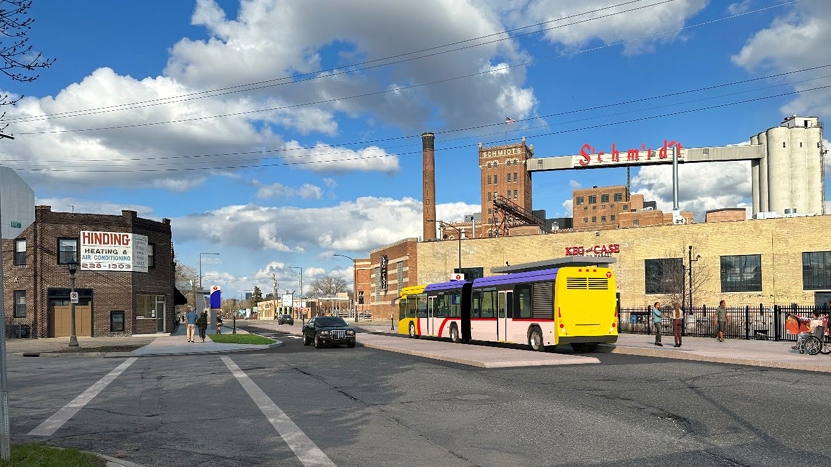by Casey Ek
The Metropolitan Council of Environmental Services is proposing an expansion of the Metropolitan Wastewater Plant.
The largest facility of its kind in the Twin Cities, the Metro Plant services 1.8 million Twin Cities area residents in over 66 communities and takes in over 180 million gallons of wastewater per day. Metropolitan Council of Environmental Services, which has been operating three wastewater incinerators at the facility, which sits along the Mississippi River in St. Paul near Pig’s Eye Lake, is proposing the fourth incinerator to meet the metro area’s growing population needs.
Minnesota Pollution Control Agency is currently reviewing an amendment to the facility’s current air pollution permit as well as an environmental assessment worksheet, the process that evaluates the environmental impacts of the proposed expansion. The amendment, according to multiple sources at the Met Council, comes after they scrapped facility plans within their initial permit that called for land application, which involves the spreading of biosolids on the soil surface or incorporating or injecting biosolids into the soil. Instead of land application, MCES is opting instead to pursue a fourth incinerator.
According to Principle Engineer and Project Manager for the fourth incinerator, Stephen Norton, going the route of the incinerator over the land application will be more efficient, and the plant would stand to reduce its potential emissions by 2.5 tons per year versus the initial scope of the facility.
“All (Environmental Protection Agency) standards still apply regardless of what you do,” Norton said.
Some in the community, including members of the West Side Community Organization have voiced concern about the public getting a chance to have their voices heard.
“At WSCO we are especially interested in pushing the state to regulate cumulative impacts, and to increase the amount of monitoring sites so that we can adequately understand how this project is impacting the West Side,” said Elizabeth Leonardsmith, Health & Environmental Justice Organizer with the organization.
“Often with these kinds of projects, there is a lack of participation in the decision-making process, so WSCO will be working to make sure community members are informed and able to strategize on a shared analysis, especially making sure any public meetings are at a time and location that is accessible to the community who will be directly impacted.”
The organization, which has not publicly opposed the project, has been working alongside the Sierra Club to help prepare the public for a to-be-announced public comment period. More information:wsco.org/incineratorupdate. The public can also email Leonardsmith at [email protected] to get involved in WSCO or join their Health and Environmental Justice Circle.
Since 1938, the Metro Plant has been a hub for regional wastewater treatment. In 2005, MCES added the three incinerators present at the facility today. Since then, the incinerators have been firing virtually nonstop to reduce solid materials in the area’s wastewater.
When area residents flush toilets, use sinks, showers or washing machines, that water gets piped to the Metro Plant where workers remove large and small contaminants through physical and chemical processes.
The incineration process comes near the end of the line, just before processed wastewater is piped back into the Mississippi River.
One walking near the entrance of the facility would notice a strong odor, but nearer the incinerator, that odor dissipates. That’s largely because the incineration process is self-contained and heavily filtered.
The plant collects solids collected from the bottom of 18 acres worth of settling tanks and pipes them to thickening mechanisms that remove a substantial portion of the water content. Once the water content is brought down to about 70 percent via centrifuge, the mixture, called “cake” is then ready to be incinerated. The incinerator superheats the solids to about 1400 degrees to remove contaminants. The vapors, solids and water left over then go through a multi-stage pollution control process. Emission from the incinerator are odorless. The leftover ash( made up primarily of phosphorus, silica, calcium, potassium, magnesium, iron and aluminum) then gets transported to a landfill. Daily, the incinerator reduces about 850 tons of solids to about 40, or about a 95% reduction.
Now, engineers say, the facility is reaching its ceiling with three incinerators. Presently, the facility is only able to shut down a single incinerator for short bursts before it is again needed to clear solid waste. A fourth incinerator, Norton says, would allow workers to shut down the units not in use for up to six months, which would allow crews to do comprehensive maintenance on them.
According to Met Council spokesman John Schadl, the region’s wastewater network would cost roughly $7 billion to replace. The Metro Plant alone would cost roughly $3 billion. The estimated cost for the fourth incinerator is $150 million. Its construction is being targeted to begin in 2024 and end 2026.








Leave a Reply